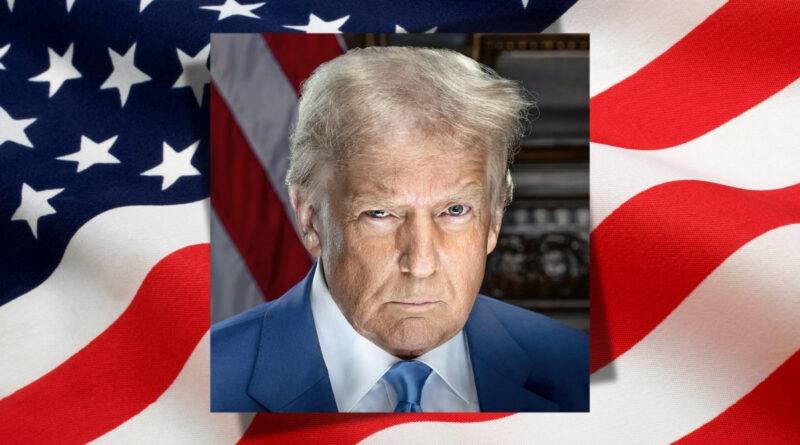You See How Trump’s Actions Are Now Affecting Indians
Experts argue that Trump’s policies will have little impact on the Indian software industry.
Demand from the US, India’s largest market, is a major factor in the country’s software exports, which reached an astonishing $200 billion in 2023–2024. India is entering new markets, including Europe and the Middle East, even as the industry gains from solid business relationships and rising demand for IT and BPO services worldwide. According to experts, the Indian software industry might not be significantly impacted by the policies of US President Donald Trump, even though they are causing confusion.
TARIFFS FROM THE US
It seems unlikely that India’s software services will be considerably impacted in the near future by the latest counter-tariffs declared by the US under the Trump administration. IT services, a major asset of Indian businesses, are less likely to be affected by these tariffs, which primarily target tangible items. However, the cost-cutting strategy that Indian businesses rely on may be disrupted if circumstances change and tariffs on services are implemented.
Innovation is the key to overcoming this possible obstacle, especially when it comes to concentrating on automation and artificial intelligence to improve operations.
SOFTWARE EXPORTS FROM INDIA
India’s software export industry has grown steadily, and in 2023–2024, total exports reached $205.2 billion, a significant increase over the previous year. With over 54% of exports, the US remains the largest market for India’s software services. The demand for IT and BPO services is the main driver of this expansion, and the US has been a reliable partner because of long-standing business relationships. However, to increase its exports, India is also seeking to expand by concentrating on new markets, particularly in Europe and the Middle East.
THE SOFTWARE INDUSTRY IN INDIA
Due to rising local demand and an emphasis on emerging technologies, the Indian software industry is nevertheless resilient and growing. Software investment by digital-native enterprises is predicted to increase from $4.6 billion in 2025 to $26 billion by 2035, causing the domestic software market to quintuple and reach $100 billion by that time.
Furthermore, the Indian artificial intelligence (AI) industry is expected to develop at a compound annual growth rate (CAGR) of more than 40% from 2020 to 2025, reaching $8 billion.
AI’s ASCENT AND EFFECT ON THE INDUSTRY
AI is more than simply an add-on; it is undoubtedly going to play a major part in India’s software industry. AI is revolutionising the way services are provided by increasing efficiency, cutting costs, and enabling more complex solutions for customers as a result of the quick developments in automation. AI is already being incorporated into the products offered by Indian IT companies, and it is anticipated to spur new inventions and business models. Businesses who use AI will be in a better position to stay ahead of the curve and keep a competitive edge as it becomes a fundamental component of service delivery.
THE VISA POLICY OF TRUMP
For Indian tech workers, the Trump administration’s modifications to the H1B visa regulations have undoubtedly presented difficulties. Indian IT companies are increasingly employing local talent in the US to lessen their need for foreign workers as a result of tighter rules and fewer approvals. This change may result in some short-term challenges, but it may also eventually improve localisation. For qualified professionals looking for long-term residency, the Golden Visa might be a compelling alternative. Indian businesses must strike a balance between these legislative changes, their changing business requirements, and the larger global environment.
The clock is running out! Trump’s tariffs could cost India $7.3 billion in lost export revenue when they go into force in 48 hours.
India and the United States have agreed to complete a portion of a trade agreement by the end of the year, just as President Donald Trump’s new tariffs are about to go into effect in just two days.
Despite these developments, it is still unclear if India would receive any exemptions from the new tariffs. New import taxes from the US are expected to affect Indian exports starting on April 2.
This week, officials from both countries met in New Delhi to negotiate the initial phase of a larger trade agreement that they intend to complete by the autumn of 2025.
In addition, India, a long-time importer of Venezuelan petroleum, may suffer as a result of Washington’s decision to impose a 25% levy on nations that purchase oil from Venezuela.
WHAT WAS TALKED ABOUT?
Both parties have “broadly come to an understanding on the next steps towards a mutually beneficial, multi-sector Bilateral Trade Agreement (BTA) to finalise its first tranche by autumn 2025,” according to a statement issued by India’s commerce minister on Saturday evening.
The discussions addressed methods to deepen bilateral cooperation in priority areas including increasing market access, reducing tariff and non-tariff barriers and deepening supply chain integration.
However, neither side showed any signs of taking action before Tuesday, when the additional US tariffs are scheduled to go into effect.
A credit rating organisation called India Ratings & Research estimates that the US tariff increase may result in a $7.3 billion decline in India’s exports over the upcoming fiscal year.
INDIA’S ATTEMPTS TO REDUCE HOSTILITIES
To improve relations with Washington, India has reduced some of its tariffs. Slashing duties on luxury motorcycles and bourbon whisky are part of this.
Indian media had stated that the government was considering removing a tax on digital advertisements and other online services prior to the most recent round of negotiations.
In order to advance the negotiations, it was also suggested that India might lower tariffs on goods including automobiles, electronics, and medical equipment.




